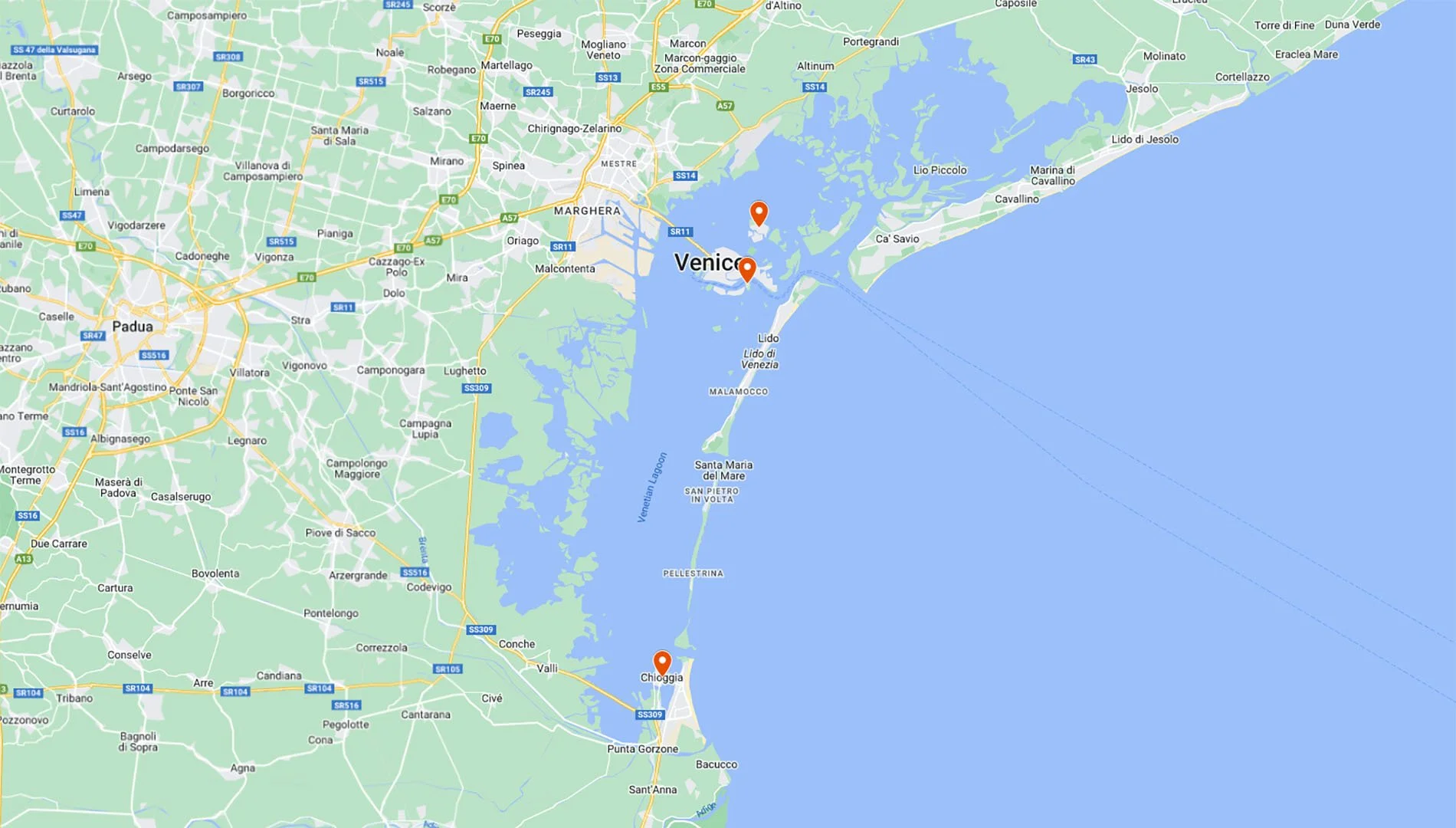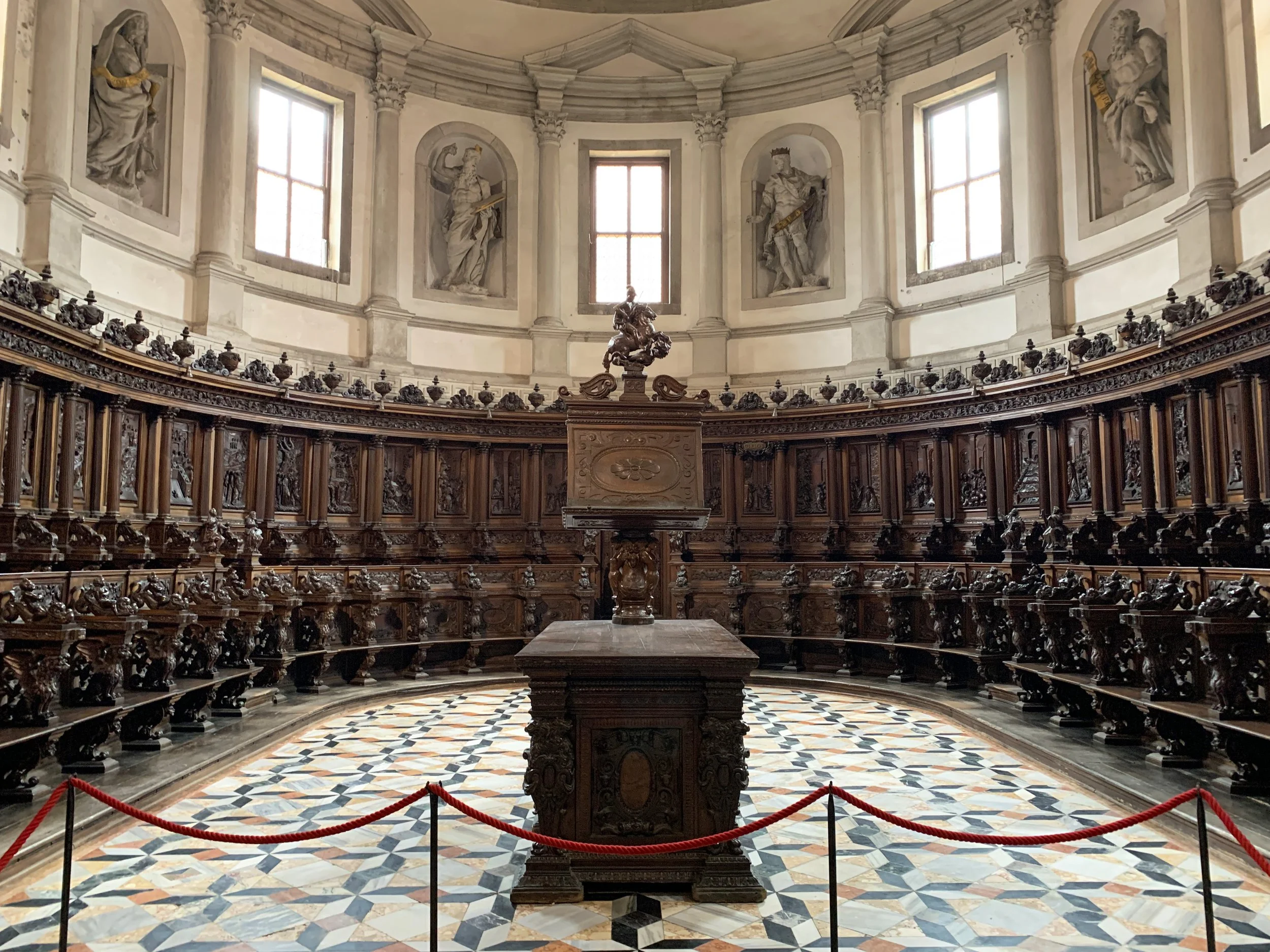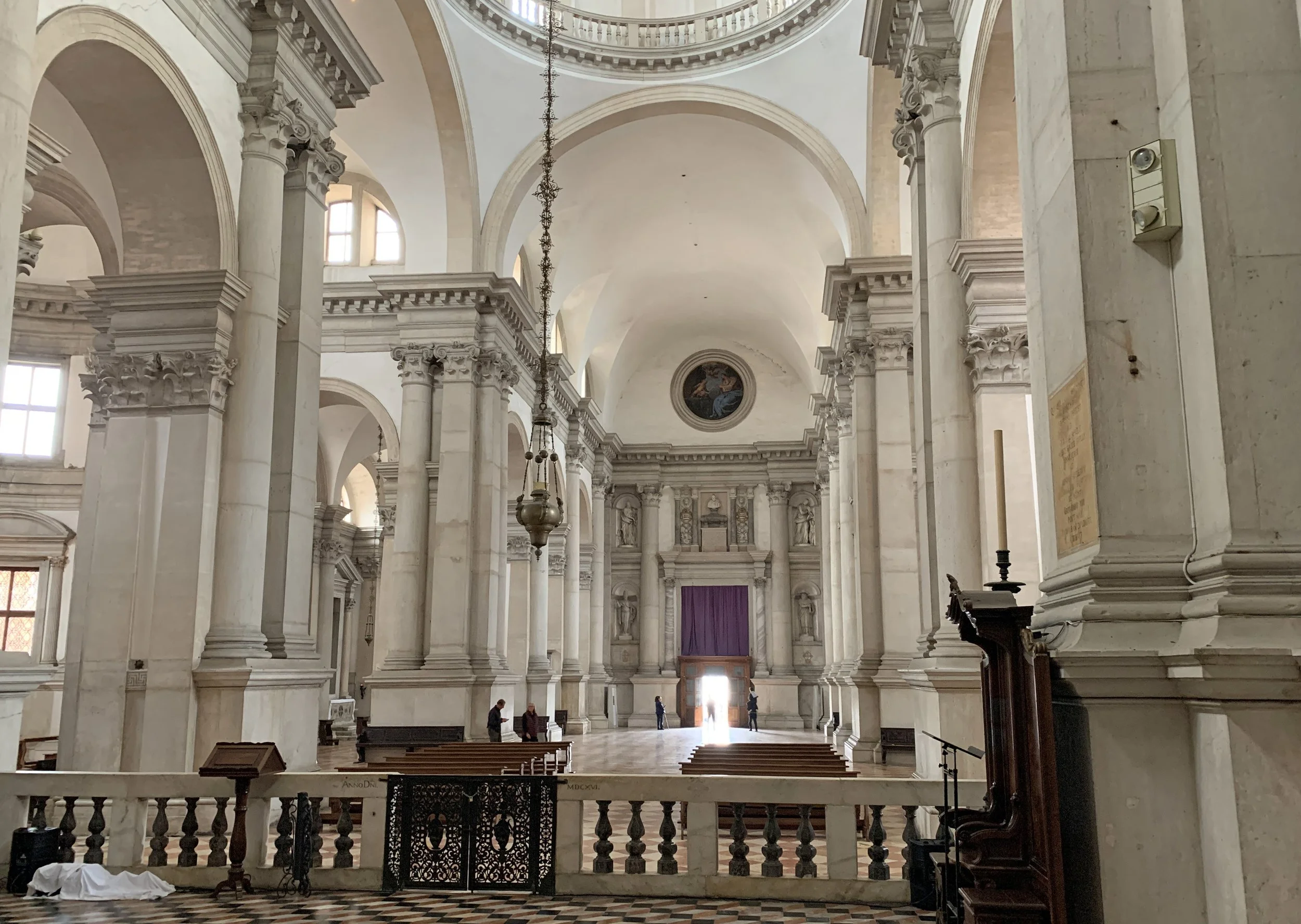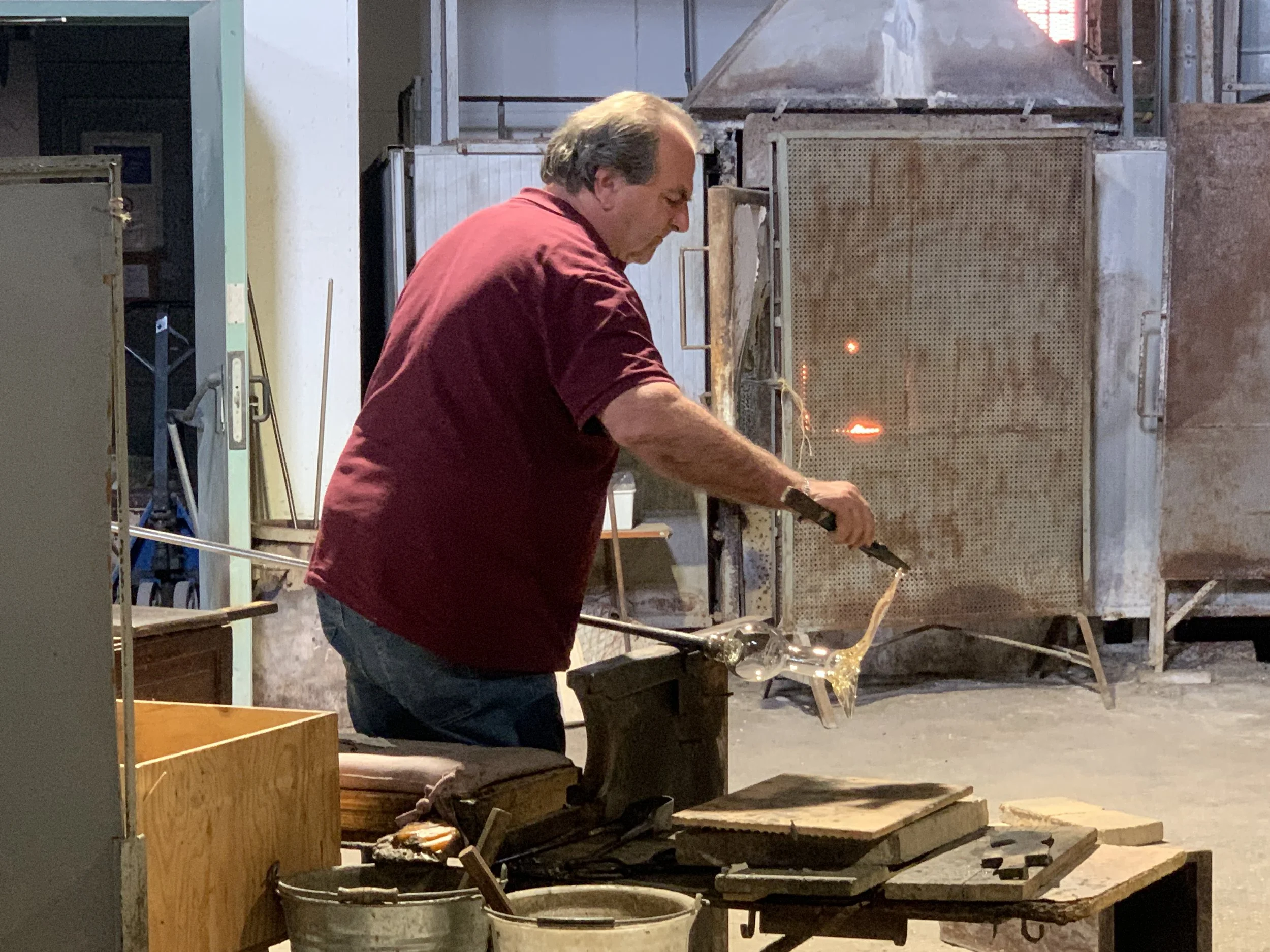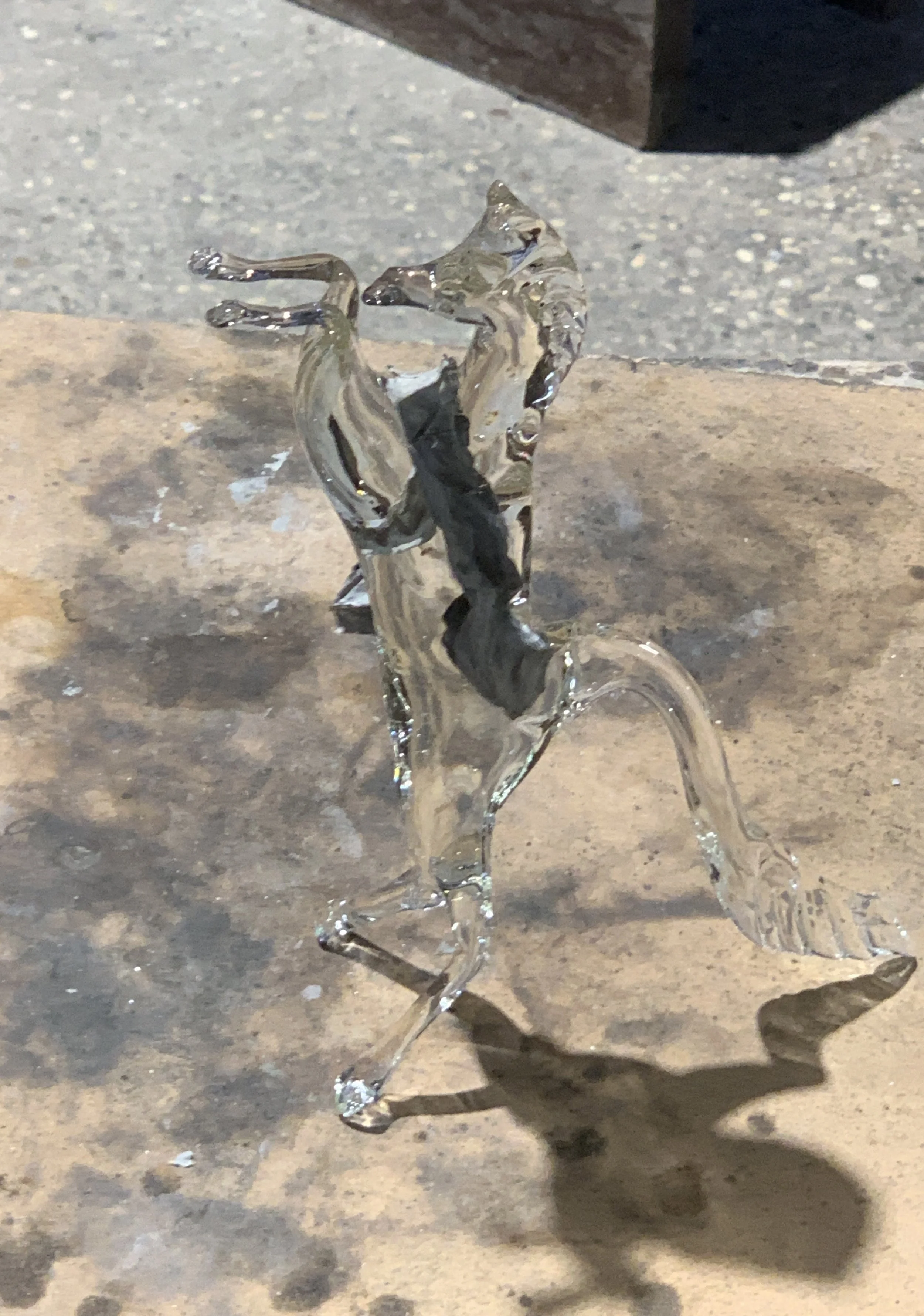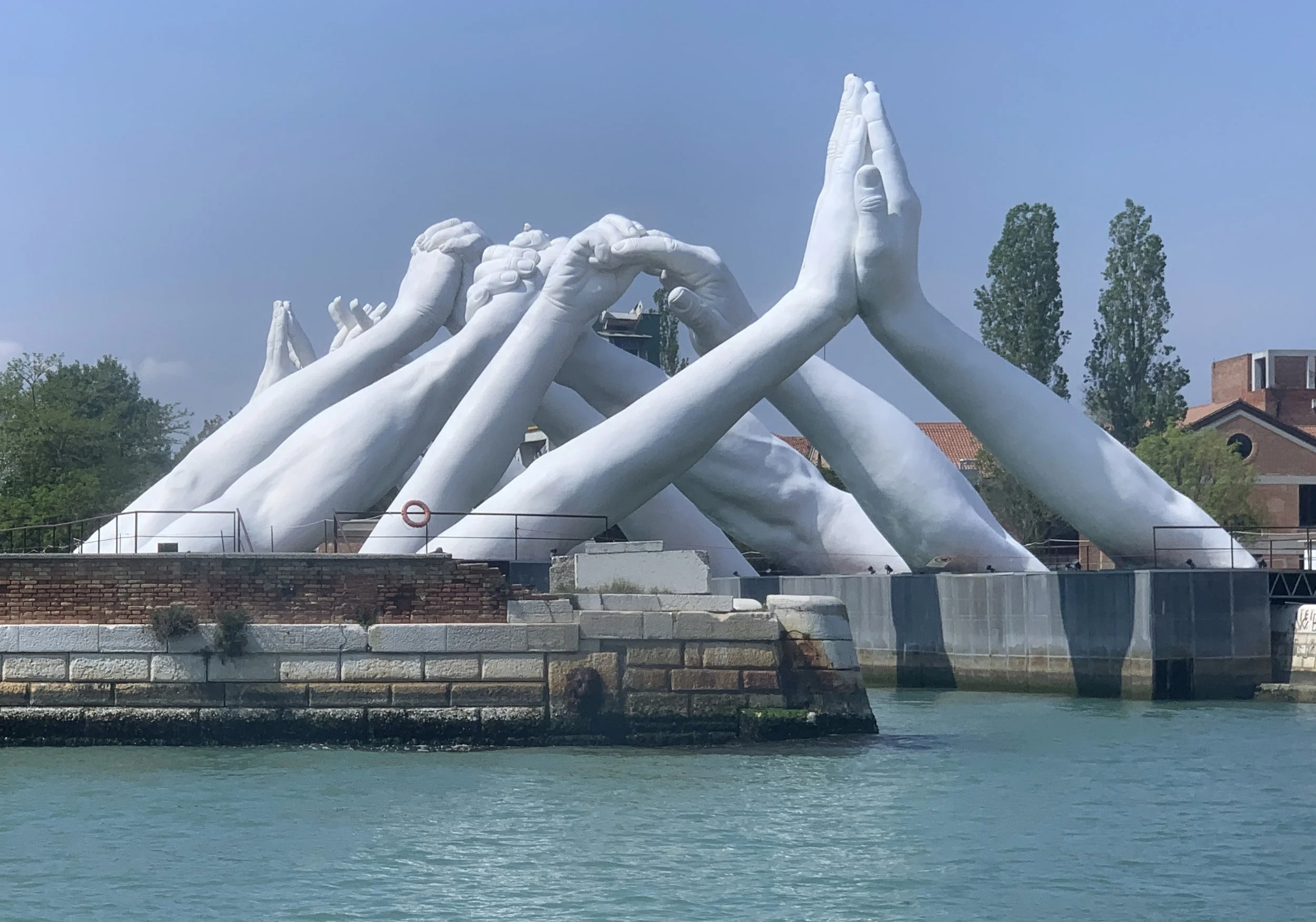Venetian Lagoon
We take a boat up the Venetian Lagoon to San Giorgio Maggiore, a grand 16th-century Benedictine church on an island across from St. Mark’s Square in Venice. Next, we visit Murano for a glassmaking demonstration and a stroll along its picturesque canals.
From our port in Chioggia, Marianne and I boarded a small tour boat that chugged north along the Venetian Lagoon toward Venice. We had visited Venice before and selected an itinerary that skirted the crowds in town while bringing us to famous landmarks we had not seen.
The skies remained gray late into the morning as we passed several villages along the wispy-thin barrier islands of Pellestrina and Lido, each about seven miles long. The Romans established one of the first settlements on Lido, at Metamaucum. As Venice grew into a powerful maritime empire between the 9th and 12th centuries, the islands became a focus for the city’s defense, with lookout towers and fortifications providing military barriers to the city.
San Giorgio Maggiore
We approached the center of Venice but first steered left toward San Giorgio Maggiore, a 16th-century Benedictine church built in the classical Renaissance style on a small island of the same name. The first church here was built in 790, and the island was given to the Benedictine Order in 982. The church and the monastery were later rebuilt, but an earthquake in 1223 destroyed every structure on the island. Groundbreaking on the current church began in 1566, and construction finished in 1610.
Two very large Late Renaissance paintings by Tintoretto — The Last Supper and The Jews in the Desert — flank the altar. A celebrated master in the Venetian school, Tintoretto was a Venetian native who would die in the city just two years after seeing his works placed here in 1592. His take on The Last Supper is particularly unique in that it depicts the table on a diagonal, meant to extend the perspective of the high altar.
Venice Views
From the steps of San Giorgio Maggiore, we could see throngs spread thickly across St. Mark’s Square. We would not add to their numbers on this trip. Our boat cruised slowly by the scene as we continued on to Murano.
Murano
About a mile north of Venice, Murano consists of a series of islands in the Venetian Lagoon that are linked together by bridges. Initially settled by the Romans, it has been the glassware center of the region since 1291, when a law required glassmaking operations to be moved away from Venice to avoid fires that had become persistent in the city. It was once an independent commune but is now a municipality of Venice, with a population of just over 5,000.
Our group watched a glassmaking demonstration at the factory of Ferro & Lazzarini, which was founded in 1929 by Eugenio Ferro and Giovanni Lazzarini to produce glass objects and chandeliers. The company is still managed by one of Ferro’s direct descendants.
The expert glassblower produced a vase and a horse rearing up on its hind legs in less than 20 minutes, carrying out the work with the excitement and showmanship of a tax attorney. He had no doubt done this routine many hundreds of times before.
After the show and some important shopping at Ferro & Lazzarini’s onsite store, we walked the main canal, picking up a slice of pizza and a beer on the way. By the 15th century, Murano had become a popular Venetian resort, with palaces built for the pleasure of nobility. But the trend waned over time. Today, despite being a popular tourist destination, Murano is much more serene than its noisy neighbor to the south.
Out first day of sightseeing complete, we boarded the tour boat for the ride back to the ship. On the way, we passed Building Bridges, created by Italian sculptor and actor Lorenzo Quinn, whose father was actor Anthony Quinn. The work depicts six sets of arms clasping hands across the water, representing Wisdom, Hope, Love, Help, Faith, and Friendship.
Sunset
Back aboard the ship, a fine sunset appeared over the steely-still waters of the Venetian Lagoon. We were ready to cross the Adriatic to the shores of Croatia.
